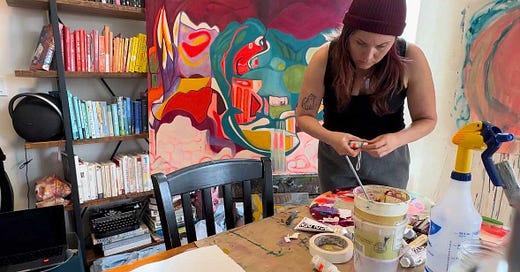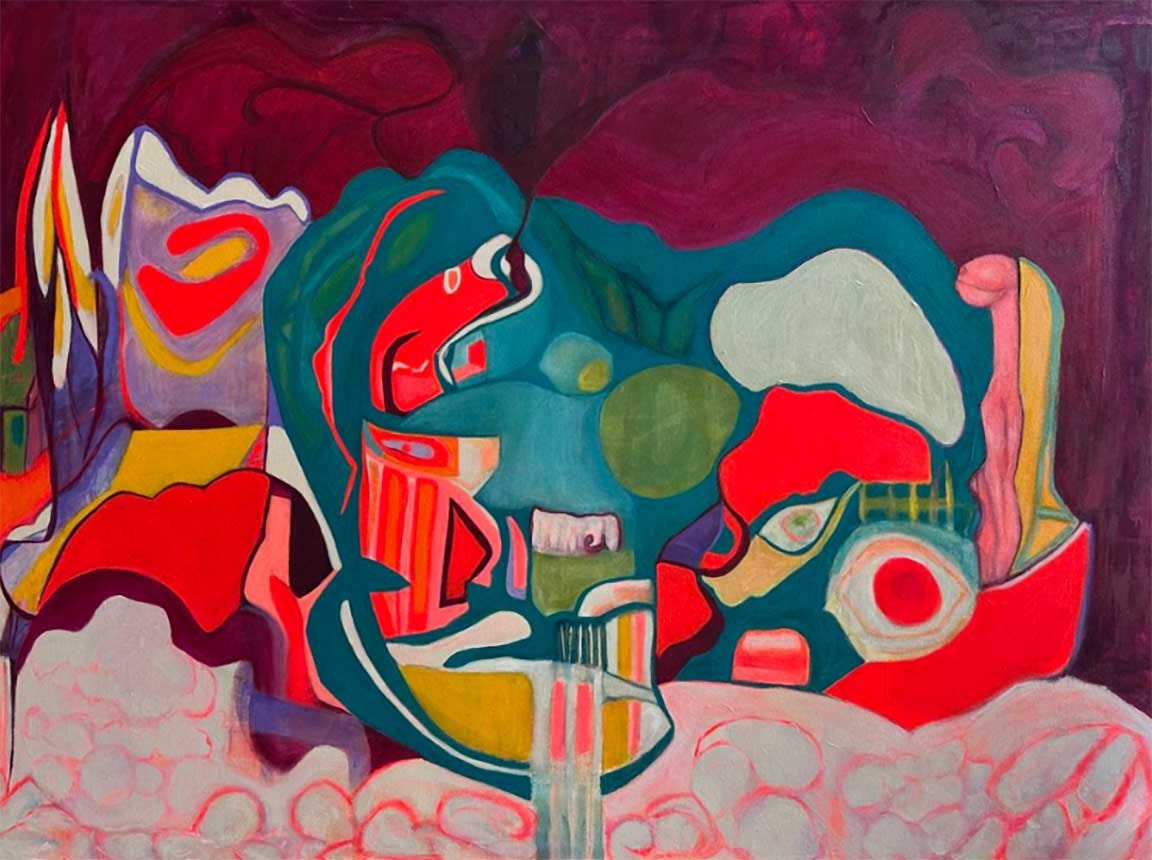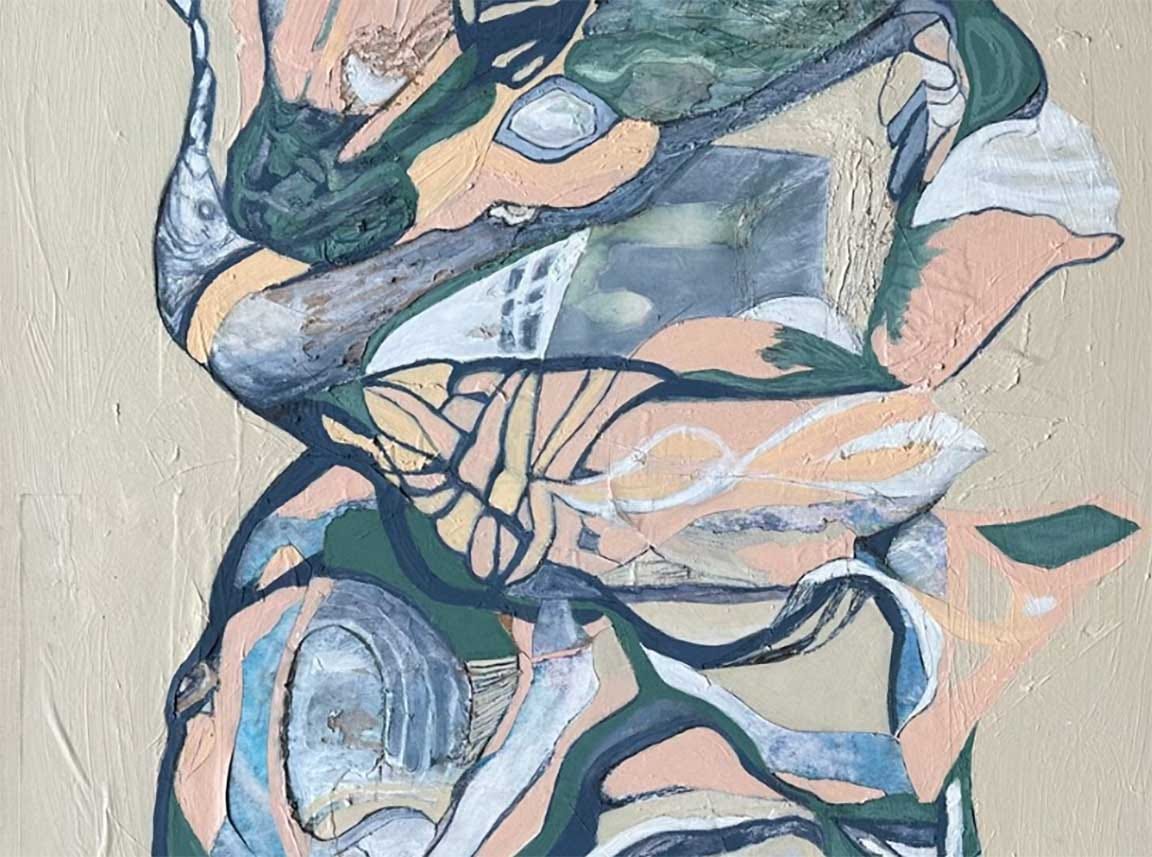Creative Conversation with Artist Clee Wren
“Creating something out of raw materials and the imagination is an opportunity to use our minds in a way that’s different from how we use it for most of the tasks we do throughout the day.” —Clee Wren.
I’m always fascinated with the creative process. And I’ve come to find that everyone does it a little differently. There is no right way to be creative, make your own work or find the muse.
Because there are many ways to creativity, I find myself inspired by the variety of approaches taken by other creative people and how they work.
So, I’ll be conversing with an artist every month, specifically about why the arts are important and how they personally are drawn to create, and I’ll share it here with you.
Why Is Art Important?
One reason I want to talk with artists about this is because I know that a lot of people wonder. I have sometimes felt at a loss myself about how to respond to this question.
Maybe the arts are important because art makes things more beautiful, or lifts the spirits, or, when it doesn’t, it’s provocative, or challenging socially. It’s probably all those things.
But there’s always the feeling that art itself is more than that and that there also might be something buried in the process of artmaking that could be celebrated more than it is.
In my own work, I find that translating feelings and emotions is more easily done with something like poetry or painting than with, say, a straightforward essay, and it can be difficult to explain why.
So when I talked with my friend and artist Clee Wren (she/they) this week about how she approaches her work as a painter and sculptor, and creativity in general, I began by asking her why art is important.
She responded with an answer that flowed from the universal to the personal.
“Creating something out of raw materials and the imagination is an opportunity to use our minds in a way that’s different from how we use it for most of the tasks we do throughout the day.” she says.
“It's a way to train our brains to look for solutions to problems in unique ways. It's why it's important for everyone, not just artists. Because, we’re in a stage of complex problems on the planet, and we need different ways to approach these problems.”
So one way it’s important is to practice a different way of using our brains to find solutions to problems we haven’t been able to solve with logic. Clee also feels comfortable with this visual language as an effective way to process her personal emotions and life transitions.
“I allow myself to feel and process things that are happening in my life in a way that is beyond logic,” she shares, “So much of our life is set up for logic. Visual language uses a different part of our minds.”
I’m excited about visual language. I love languages in general because of how one can communicate and ponder different kinds of things depending on the components of the language.
Those components varying depending on how and where the language developed. And in the case of visual language, it developed before writing, before math and science, and probably before what we call “logic”.
A Visual Language
Clee doesn’t begin her work with an “idea” per se. She starts with the materials themselves, using visual language to communicate directly with them, resulting in an ongoing creative collaboration with the work itself.
“It’s really about following the materials,” she says, “it’s the first step, being drawn to materials. I’ll initially feel like building something, using maybe wire mesh, or using a particular color. So something will inspire me,” she further explains, “Then it’s about allowing the materials to inform what’s next with the visual language we share.”
Clee allows the media she’s working with to communicate with her by using a process of listening to her body, instead of using isolated thinking. After the material suggests a direction, she begins an interaction. The interaction itself determines the following direction, like the next color choice, or how to use the medium itself.
“For example, a color might inform me where the next color will be. Or what the intensity of the brush will be. This primal, raw, visceral language of the visual: color, shape, movement—it’s a way for our brains to problem-solve in a different way than usual.”
She’ll create an initial work from this interaction between her body and the media.
“I use a body centered movement oriented process to communicate. It can look like painting intensively. I’ll give myself permission to be broad or rough with the process. Then I give it space and time. I wait. Then I come back and refine it.”
Listening to that inner voice instead of just the outer voice feels important when communicating through visual language.
“When people tap into their authentic voice, their specific resonance, their unique gift, they can get in touch with the overall healing.” she says, “Creativity is for everybody.”
Visit Clee Wren’s website. Clee (she/they) is a multidisciplinary visual artist who lives and works in Portland, Oregon. She curiously explores a variety of media, utilizing an abstract and surreal visual language to speak with color, organic forms, and movement. Clee received a BFA in Studio Art from SOU, and an MFA in Interdisciplinary Art from CIIS.







